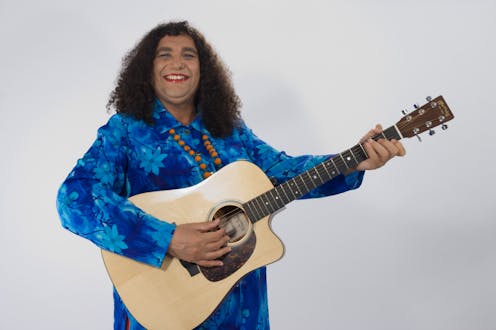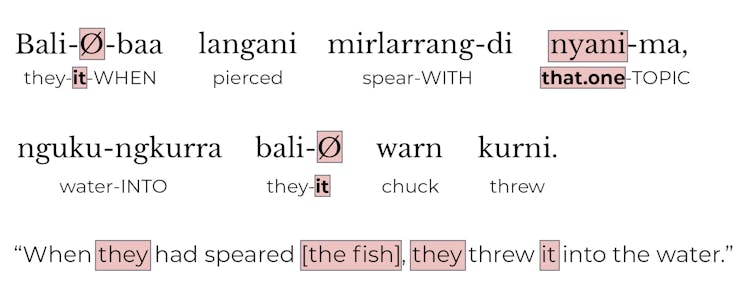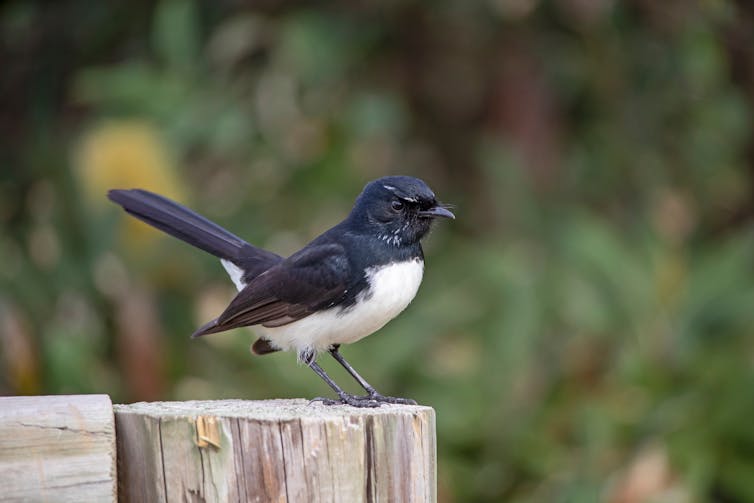
If you visit Broome in Western Australia, you might be lucky enough to see Mary G perform. Mary G is a popular Gija comedian. On her website, English is used to describe Mary G as she and Mary G’s alter ego, Mark Bin Bakar, as he. But if you listen to Broome locals speaking Kriol, Mary G is simply referred to by the gender-neutral Kriol pronoun im.
Gendered pronouns have become a contested part of language since we became more aware of the effects pronoun usage have on transgender and non-binary people. Different languages have different solutions. For example, it has become commonplace in English to extend the non-specific singular use of they to a specific use.
For most of Australia’s 460 First Nations languages, this issue does not exist. There is no gender distinction between third-person singular pronouns (she/he/it), except in a very few languages such as Murrinhpatha in the Northern Territory’s Daly River area.
Nyantu and similar sounding words are common pronouns used in many languages to cover she/he/it. Other First Languages use pronoun word endings, and many do not have a form for the third-person singular pronoun she/he/it. This means that not adding an ending to a word indicates she/he/it.
Other languages use that one to refer to she/he/it, again avoiding gender.
Mudburra, a language of the Elliott region in the NT, uses both pronoun endings and that one.
In the following example you can see the pronoun ending -li (“they”), but there is no form for it (i.e. “the fish”). We’ve added -Ø so you can see where the object pronoun would normally go. The word nyani (“that one”) is then used to refer to the speared fish.

Neutralisation of gender also occurs in some sign languages in Central Australia. In Anmatyerr signing, the sign for akngey (“father”) and awenh (“father’s sister”) are both signed the same way.
In Mudburra signing, the sign for mungkaja (“wife”) and ngumbarna (“husband”) are also the same.
The natural world
Gender does find a place in other First Languages in unexpected ways, revealing Indigenous perspectives on the natural and spiritual world.
A good example comes from another language of the Elliott region, Jingulu, the language of Jingili people. Jingulu has a gender system which affects nouns rather than pronouns.
Gender in Jingulu is not entirely unlike the Latin masculine, feminine and neuter system, in which every noun has one of three genders and has different endings to reflect this.
One difference between Latin and Jingulu is that Jingulu has an extra gender: vegetable. This four-way system is common in languages in northern Australia.
All nouns in Jingulu belong to one of four genders. Masculine words tend to end in -a or -ji, feminine words in -rni or -rdi, vegetable words in -mi or -bi, and neuter words in -u.
For some nouns, it is easy to predict which gender they belong to. Words for male humans and other animals are masculine, words for female humans and other animals are feminine, many words for edible plants are vegetable, while many words for other plants and inanimate objects are neuter.
The gender of other words is less obvious. For Jingili people, shape is important. For example, the vegetable gender contains many long, thin or pointy objects beyond bush foods. The body parts ngijinmi (“tail”), kilimi (“nose”) and mankujbi (“neck”) are classified as vegetable, whereas most other body parts are neuter.
Conversely, damangka (“spherical yam from a bush potato plant”) and kirangkuju (“round melon”) are neuter, where we might have expected them to be vegetable.
Animals that are atypical are often assigned feminine gender, such as water creatures that don’t swim much, insects that sting with their tails, and emus (birds that don’t fly, and a species in which the male rears the young alone).
A spiritual dimension
For other First Nations languages, there is a spiritual dimension to gender classification. The northern Queensland language Dyirbal also has four genders.
The system is similar to German, in which the gender of a noun is expressed in the article (i.e. the or a), rather than with a noun ending. Dyirbal also has different forms according to the case system, which is again similar to German.
Like Jingulu, the gender of some Dyirbal words is predictable, based on birth sex. For other words, knowledge of the Dreamtime is required to know to which gender words belong.
For example, most birds are feminine because they are believed to be the spirits of dead women, but willy-wagtails are masculine because they are mythical men.

Similarly, the sun is a female deity and therefore takes the feminine article, whereas the moon is a male deity and is classified as masculine gender.
This is an edited extract from Bina: First Nations Languages, Old and New by Gari Tudor-Smith, Paul Williams and Felicity Meakins (Black Inc.)
Felicity Meakins receives funding from the Australian Research Council
Gari Tudor-Smith receives funding from Writers Victoria.
Paul Williams does not work for, consult, own shares in or receive funding from any company or organisation that would benefit from this article, and has disclosed no relevant affiliations beyond their academic appointment.
This article was originally published on The Conversation. Read the original article.







